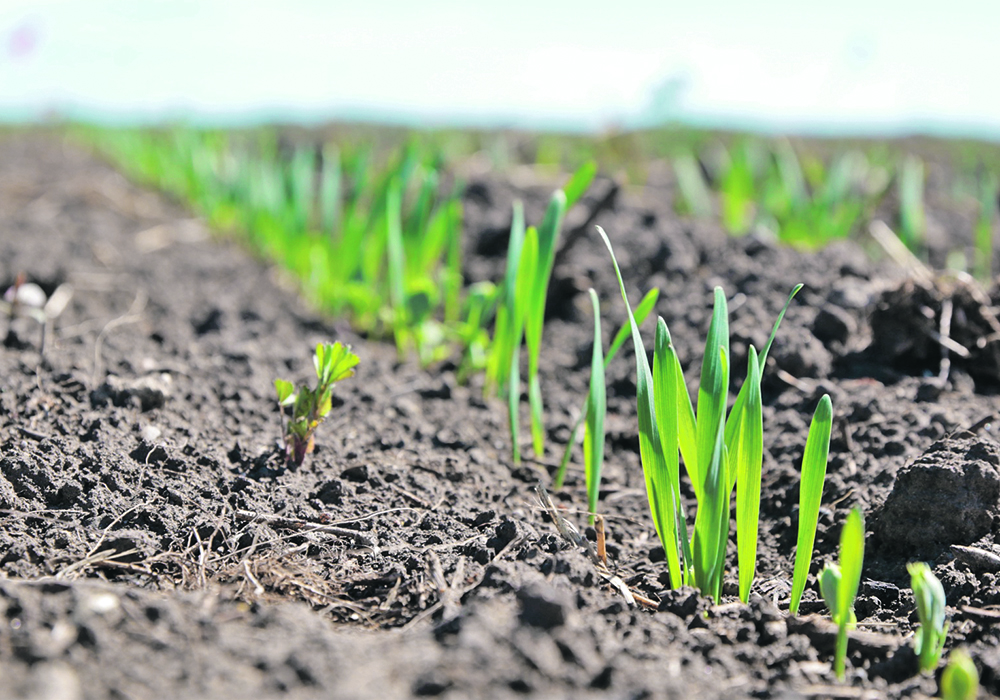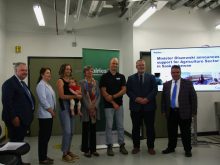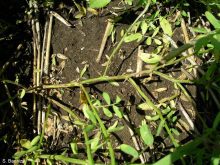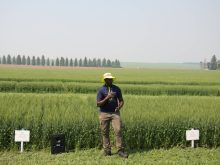Producers can conduct their own trials to offer real-world data, but crop groups are also looking at performing research on farms
Farmers who wonder about the value of small-plot research on their individual farms might consider doing their own on-farm research.
Farmers at an Indian Head Agricultural Research Foundation seminar heard that on-farm trials can bridge the gap by offering real-world data specific to their farms.
IHARF intends to partner with farmers and crop organizations this coming season to conduct such trials.
“We envision a few pre-selected trial topics or protocols and we’ll be looking for producers who are interested in conducting field scale trials on these topics,” said research associate Christiane Catellier. “At the same time, we also want to try to leave some capacity in the program for some custom trials.”
Read Also

New program aims to support plant-based exports to Asia
Understanding the preferences of consumers in Taiwan and how they differ from Indonesia or Malaysia isn’t easy for a small company in Saskatchewan.
Speakers from several Saskatchewan crop organizations said they’ve just recently begun the practice of larger trials based on what producers say they need.
Carmen Prang from Sask Wheat said they partnered with IHARF last year and plan to do more.
At SaskPulse, the Pulse Replicated On-Farm Independent Trials (PROFIT), in partnership with IHARF, will begin with an anchor project on seeding rates, said Sarah Anderson.
She said the on-farm research has to answer the questions of whether a research recommendation is practical, effective and well-suited to a farm and whether it is profitable.
SaskBarley is just launching its program in 2023 and SaskCanola hasn’t established any programs or protocols yet but has a number of priorities it would like to address.
Catellier said the more the merrier.
The benefits of on-farm research include giving farmers more control of the topics and being able to use their own equipment, management style and logistics, she said. They assume a lower level of risk by trying something on a smaller number of acres and at the same time they get an understanding of the design and limitations of research.
On-farm research should begin with a question, which is then broken down into simple and practical treatments.
“For field scale research a question that can be answered with two or three treatments is usually the best strategy to keep it manageable,” she said.
For example, a farmer might wonder whether applying fungicide to a malt barley crop is economical. This could be done with two treatments: with and without fungicide.
Farmers should think about where and how to conduct the research. Catellier said it’s a myth that the area needs to be uniform.
“If you want widely applicable results, you’re better off choosing a representative rather than a uniform area for your trials,” she said.
Strip trials are the most common and logistically efficient, as long as there is proper replication and randomization.
The more replicates there are, the more results are obtained and the more widely they may be applied. She said a minimum of three replicates is required.
Collecting data is the next step and that depends on the original question. Catellier said yield is important because it is a large part of economic decision-making, but non-yield factors could also be in play. Data should be collected equally for each treatment in a replicate.
The data is statistically analyzed and considers differences within a replicate relative to overall variability and depending on the level of replication, she said.
In agricultural research, the convention is that differences are only considered significant if the probability is at least 95 percent. When looking at results, this is the P value.
“To be 95 percent confident that your effect is real you want a P value of .05 or less,” Catellier said.
A result that is not significant can mean there was no effect from the treatment or the data wasn’t able to statistically confirm an effect.
The final step is to share results. The data from some on-farm research programs, such as that of Antara Agronomy in Manitoba, is owned by the farmer participants and kept confidential. Other programs, such as Manitoba Pulse and Soybean Growers’ on-farm network, pool the data for a larger database of information.
Catellier said increased confidence in the results, a quicker rate of adoption and learning from others are all benefits of sharing.
Farmers can partner with research specialists to make sure the trial is set up and conducted properly.


















